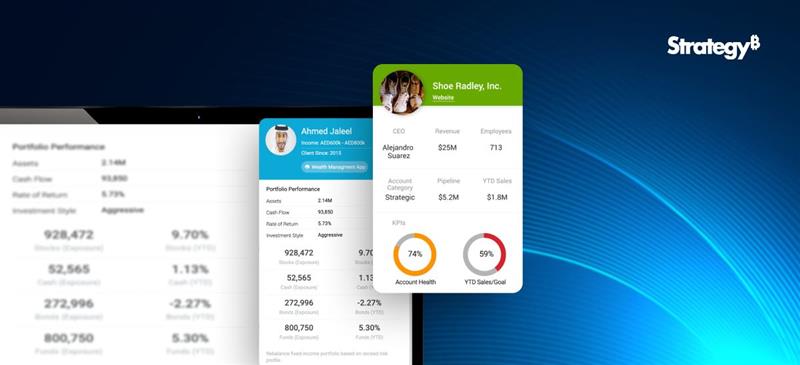Enterprises worldwide have perceived the potential benefits of AI for their operations. AI gives humans the freedom to make insightful decisions while allowing a computer to perform other preset tasks that necessitates the development of such technologies in the first place. These tools assist you in developing, but they also aid in optimising networks and workflows.
A list of Artificial Intelligence tools is given below:
- Scikit Learn
- Tensorflow
- Theano
- Caffe
- MxNet
- Keras
- PyTorch
- CNTK
SCIKIT Learn
Known to be the most wanted tool in the library of Machine Learning for the python programming language, Scikit learn offers a wide range of tools for statistical modelling, Predictive analytics and very many other machine learning tasks. It underpins many administered and unsupervised learning calculations. It is a perfect tool for fledgling, and it incorporates direct and calculated relapses, choice trees, bunching, k-implies, etc.
Tensorflow
TensorFlow is an end-to-end open-source platform with a flexible ecosystem of tools for creating Machine Learning applications. It allows Google’s voice-recognition tool to spot queries in photos and understand audibly stated phrases.
Theano
Theano was created to simplify and speed up the creation of sophisticated learning models so that they might be used in creative projects. It’s written in Python and can run on both GPUs and CPUs. It generates elevated information counts that are often higher than when it runs solely on the CPU. Theano’s speed makes it highly cost-effective to perform any complex calculations.
Caffe
The Berkeley Vision and Learning Center (BVLC) and network donors collaborated to construct Caffe, a deep learning structure that prioritises articulation, speed, and assessed quality. Google’s Deep Dream uses Caffe Framework. CAFFE is a Python-interfaced BSD-authorized C++ library.
MxNET
MxNET uses a ‘forgetful back prop’ to barter computation time for memory, which is highly useful for recurrent nets on very long sequences. As it is an easy-to-use support for multi-GPU and multi-machine training, scalability is a priority during the design process. There are a lot of intriguing features, such as the ability to write custom layers in high-level languages. Unlike almost all other significant frameworks, it is not explicitly regulated by a vast corporation, which is suitable for an open-source, community-developed framework.
Keras
Keras is what you need if you like Python and how it works. It is a high-end library that tackles neural networks highly effectively for recurrent nets on very long sequences, which it achieves by utilising Theano and TensorFlow in the backend. It recognises the architecture that relates to specific issues. It aids in the detection of problems by using photos with weights. It optimises the results of a network by configuring it. Keras provides an abstract structure that can be transformed into any other framework for compatibility or performance.
Pytorch
The code for Pytorch, a Facebook-created artificial system, is easily accessible on Github. There are over 22000 stars on it. The framework has been in high demand in recent years, and it is still being developed. PyTorch uses reverse-mode auto-differentiation to modify network behaviour arbitrarily with zero lag or overhead, speeding up research iterations. Its deep learning framework is optimised for achieving state-of-the-art results in research.
CNTK
The Microsoft Cognitive Toolkit (CNTK) is an open-source, unified toolkit that describes neural networks as computational steps via a directed graph. Users utilise CNTK to release and merge popular types of models, such as DNNs, CNNs, RNNs, and LSTMs. It employs stochastic gradient descent (SGD), which learns through parallelisation and automatic differentiation across multiple servers and GPUs. Because of its open-source licenses, anyone can try out CNTK
Machine Learning Tools
Machine learning tools are algorithmic applications of artificial intelligence that allow systems to learn and develop without human input; data mining and predictive modelling are similar concepts. They will enable the software to improve its accuracy in anticipating outcomes without programming it directly. Some top Machine Learning Tools are enlisted below:
- Microsoft Azure Machine Learning
- IBM Watson
- Google TensorFlow
- Amazon Machine Learning
- OpenNMS
- Google Colab
- Apache Mahout
- Shogun
Microsoft Azure Machine Learning
Microsoft Azure Machine Learning is a cloud platform for building, training, and deploying AI models. Microsoft is constantly updating and improving its machine learning tools, and it just announced changes to Azure Machine Learning, including the retirement of the Azure Machine Learning Workbench.
IBM Watson
Watson Machine Learning is a cloud service from IBM that leverages data to deploy machine learning and deep learning models. Users can use this machine learning application to execute two basic machine learning operations: training and scoring. Remember that IBM Watson is best suited for developing machine learning applications via API connections.
Google TensorFlow
TensorFlow is an open-source software library for dataflow programming that Google uses for research and production. TensorFlow is, at its core, a machine learning framework. This machine learning tool is new to the market and is rapidly evolving. The ease with which TensorFlow allows developers to visualise neural networks is perhaps the most appealing feature.
Amazon Machine Learning
Amazon Machine Learning is used for creating and predicting Machine Learning models. Amazon Machine Learning comes with an automatic data transformation tool, which makes the machine learning tool even more user-friendly. Amazon also offers other machine learning tools, such as Amazon SageMaker, a fully-managed platform that makes using machine learning models simple for developers and data scientists.
OpenNMS
Open Neural Networks Package is a neural network implementation software library. OpenNMS, written in the C++ programming language, allows you to download its whole library from GitHub or SourceForge.
Google Colab
Google Colab is a cloud service supported by Python. It will assist in developing machine learning applications using PyTorch, Keras, TensorFlow, and OpenCV libraries. It facilitates machine learning and is accessible through Google Drive.
Apache Mahout
Apache Mahout is an Apache Software Foundation project that employs the MapReduce paradigm and is built on top of Apache Hadoop. It’s also utilised to construct scalable, distributed machine learning algorithms for clustering, collaborative filtering, and classification. Mahout includes Java libraries for popular math algorithms and operations and foundational Java collections, concentrating on statistics and linear algebra.
Shogun
Shogun is an open-source ML platform, an open-source machine learning software library built in C++. It employs a diverse set of unified and efficient machine learning techniques. Shogun provides a well-organised implementation of all standard machine learning methods and is a critical player in ML education and development.
Robotic Process Automation Tools
Robotic Process Automation (RPA) tools are commonly used for task automation configuration. These tools are essential for automating repetitive back-office activities. With RPA Tools, we acquire a virtual employee who can execute repetitive tasks efficiently and, at less cost, than humans.
The following is a curated list of the top RPA tools:
- Keysight’s Eggplant
- Inflectra Rapise
- Blue Prism
- UiPath
- Automation Anywhere
- Pega
- Contextor
- Nice Systems
Keysight’s Eggplant
Eggplant RPA is a solution designed for process experts to automate the execution of repetitive tasks. It is compatible with apps such as SAP, Oracle, etc. and provides increased productivity and reduces errors.
Inflectra Rapise
Rapise by Inflectraina, a test automation solution, is in its seventh iteration and specialises in complicated applications like MS Dynamics, Salesforce, and SAP. Rapise now can automate Web, Desktop, and Mobile apps and supports hybrid business settings.
Blue Prism
Blue Prism RPA supports all core capabilities and is used with any application on any platform. You will need programming abilities to utilise this application, but it is user-friendly for developers. Blue Prism is ideal for medium and large businesses.
UiPath
UiPath is a user-friendly system that delivers security by handling credentials, encrypting data, and controlling access based on role. It is an open platform, adaptable for any business size and capable of handling complex procedures.
Automation Anywhere
Automation Anywhere provides core functions and security through authentication, encryption, and credentials. It is an easy-to-use solution ideal for medium and big businesses that offers both on-premise and cloud-based services.
Pega
Pega is a business process management platform that is hosted in the cloud. This is ideal for medium and large organisations and solely delivers cloud-based solutions or services. Pega is compatible with Windows, Linux, and Mac and can be installed on desktop servers.
Contextor
Contextor is an excellent fit for any size front office and works with all workstation applications. It supports Citrix and RDP hybrid virtualisation environments and provides on-premise and cloud services. Contextor can interface with both active and minimised programmes.
Nice Systems
The friendly RPA tool named NEVA-Nice Employee Virtual Attendant is an intelligent tool that assists in automating mundane tasks, compliance adherence, and Upsell. It provides cloud-based and on-premise solutions and attended and unattended server automation.
The trio, AI, ML and RPA, are separate entities, closely interconnected. As it can solve most real-world issues in a blink, they have become an inseparable helping hand in all the major businesses.




